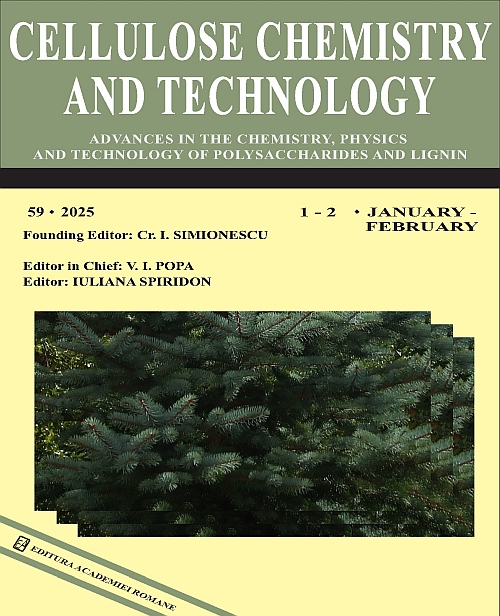|
Title
Investigation of carboxymethyl cellulose
incorporation effects on TFC membrane active layers using various supports
Authors
HANANE ABURIDEH, DJAMILA ZIOUI, SARRA HOUT, ZOUBIR BELGROUN, FATMA
ZOHRA YAHIAOUI and MOHAMED ABBAS
Received
July 22, 2024
Published
Volume 59 Issue 1-2 January-February
Keywords
TFC thin film composite membrane, cellulose acetate, polyacrylonitrile, polyethersulfone, sodium
carboxymethyl cellulose (CMC-Na), PI interfacial polymerization
Abstract
Thin film composite (TFC) membranes have been widely used in saline water treatment. However, challenges remain in
their development, particularly regarding the trade-off between permeability and selectivity. This work focuses on
fabricating TFC nanofiltration (NF) membranes coated with a carboxymethyl cellulose sodium (CMC-Na) solution to
address this compromise. TFC membranes are developed in several steps, starting with the formation of a support polymer
layer through the non-solvent induced phase separation (NIPS) process. Interfacial polymerization (PI) was successfully
performed on cellulose acetate (AC), polyacrylonitrile (PAN), and polyethersulfone (PES) supports. An active layer of
polyamide (PA) was obtained by the condensation reaction between piperazine (PIP) and trimesoyl chloride (TMC). The
permeability and selectivity of the TFC membranes were evaluated by incorporating the CMC solution. The membranes
were characterized based on their flux, hydraulic permeability, and selective permeability. The physicochemical
properties of the manufactured membranes were analyzed using FTIR, water content measurements, and material transfer
assessments. The TFC PAN B3 membrane exhibited the best flux and permeability, achieving values of 500 L/m².h and
24 L/m².h.bar, respectively. In contrast, the TFC PES C3 membrane demonstrated superior efficiency in rejecting Mg²⁺,
Ca²⁺, and NaCl, with respective rejection rates of 66%, 60%, and 67%.
Link
https://doi.org/10.35812/CelluloseChemTechnol.2025.59.03
|



